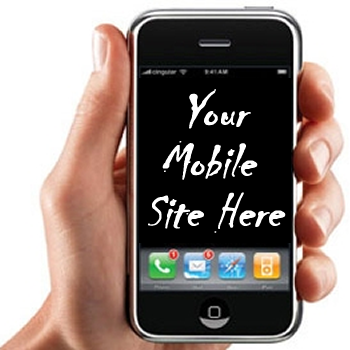 With the rapidly growing number of users who use mobile devices to browse the Internet, creating a version of your website specifically tailored toward them is extremely important to maintain your brand’s popularity and broaden its appeal. The most important aspect of mobile Internet browsing is speed. People want to get to the content they want as fast as possible. However, many website owners and designers make very simple mistakes that can negatively impact the attractiveness of your website and drive users away.
With the rapidly growing number of users who use mobile devices to browse the Internet, creating a version of your website specifically tailored toward them is extremely important to maintain your brand’s popularity and broaden its appeal. The most important aspect of mobile Internet browsing is speed. People want to get to the content they want as fast as possible. However, many website owners and designers make very simple mistakes that can negatively impact the attractiveness of your website and drive users away.
The Unbearable Beauty of Images
Let’s say that your full size website is beautiful, using dozens of images to craft an unique browsing experience for visitors. While it is usually of little concern to people browsing on laptops and desktops with high speed Internet, a large amount of images on a website intended for mobile devices will greatly increase loading times and reduce responsiveness of the browsers. Older generation devices may even fail to load the website entirely when they run out of usable memory. In general, a minimalist approach is best. Only keep images that are absolutely necessary for your website and keep them at the highest possible compression that doesn’t compromise quality.
Too Much Content Is Not Necessarily Good
If you have a content-rich website, you may be tempted to create a website that allows mobile devices to access its entirety. However, that is an easy way to increase load times to the point that they become acceptable. Mobile websites need to be tailored for specific needs. Identify what a person visiting your website on a mobile device might be looking for and fashion the site accordingly. Trim unnecessary elements and remove content that is not relevant to the page displayed. At the same time, be careful not to go overboard. Too little content and your users will become frustrated by the lack of information.
A Convenient Interface Is Priceless
You may create a website that loads near instantly, but still turn people away due to long load times. That’s because the time spent looking for content on your website is essentially a part of the loading time. Forcing users to fill out forms, type in words, struggle with miniature buttons all needlessly bloat the amount of time needed to navigate the page. Tailor the website to the capabilities of a given mobile device. If someone accesses your website with a touch screen smartphone, they should be able to use touch to navigate. That means eschewing conventional navigation in favor of large buttons, circular menus, drop down lists and other easy to use methods of browsing a website.
Transparency in Action
Sometimes, a website may need to load a larger amount of data in order to work correctly or provide the necessary information. A common error is forgetting that this fact has to be clearly communicated. If a website stops responding to user input, it may create the impression that it froze and frustrate the user. To avoid this, clearly inform the user what is happening, especially when the website is loading something. A simple loading indicator like a turning wheel or working clock can work wonders in this regard.


